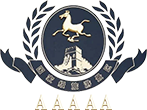The wild goose is one of the famous bird groups to us. They often migrate in dozens, hundreds or even thousands, and flies in line, close to each other. Ancient people call it “a formation of wild goose”. A formation of wild goose is often led by an experienced “leading geese”. When they speed up, the team will form a “herringbone” shape. When they slow down, the team will turn from a “herringbone” shape to a long snake shape. This is an effective measure during long-distance migration. When the “leading goose” flying ahead flies through the air, a weak updraft will be generated on the tip of its wing, and those behind it can save physical strength by using this updraft. However, without this weak updraft to make use of, the “leading goose” may easily get tired. So during the long-distance migration, the geese often have to change their formation and replace the “leading goose”. Their movements are very regular, sometimes they sing while flying and “squeak” constantly. Most of the migration takes place at dusk or night. During the trip, they often have to choose larger waters, for example, lakes, to take a rest and forage for food, like fish, shrimp and aquatic plants. Each migration takes about 1-2 months, and the trip is very toilsome. But they go north in spring, return south in autumn and never break their promise. Wherever they breed or spend the winter, they always go north and north on time.








 Public Security Filing No.:321324402000556
Public Security Filing No.:321324402000556